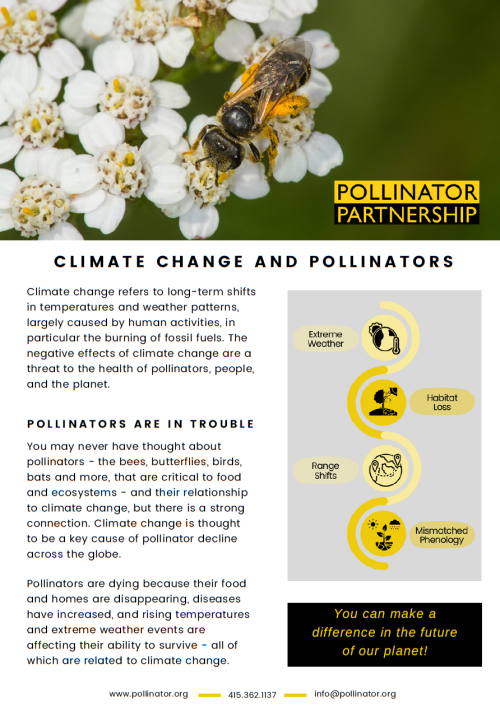Climate Change is in Our Hands - Little Things Matter
The moment we've all been waiting for is here! The 2023 Climate Change is in Our Hands Poster is now available for pre-order. Created by artist Carol Schwartz, this poster focuses on climate change and pollinators, and how there are “little things” that we can do as individuals to help fight climate change while supporting pollinators, the little creatures that do so much. Climate change is in our hands, and the little things we do each day can make a difference in the health of pollinators, people, and the planet. Order yours today!
Poster is 28 x 34
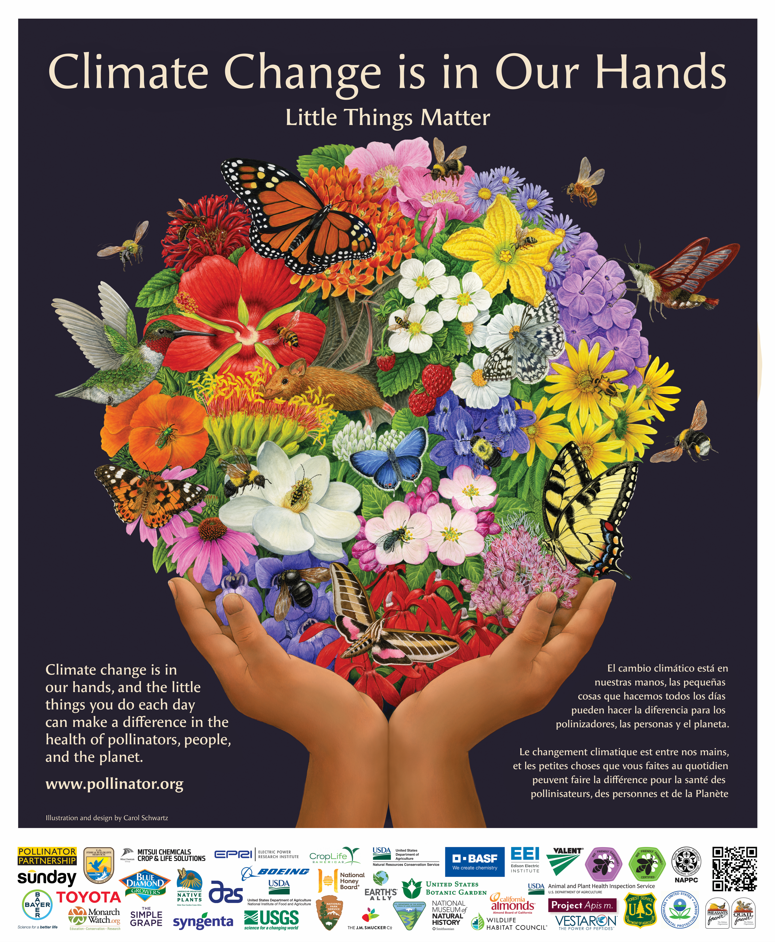
Order Posters
Shipping to Canada? Use the payment button below.
About the Artist

A passion for art and nature has inspired Carol Schwartz her whole life. As a child growing up in Kansas City, Missouri, Carol was fascinated with animals and had a constant supply of drawing materials. She earned her BFA through attending the Kansas City Art Institute and Rhode Island School of Design. In 2014 she received her MFA from the University of Hartford in Connecticut. Her illustrations have appeared in more than 60 picture books, mostly science related nonfiction, and countless magazines, newspapers and advertisements. Her books have been chosen as Outstanding Science Trade Books by the National Science Teacher’s Association and Children’s Book Council and have been honored with the Children’s Choice Book Award and the Original Art exhibition at the Society of Illustrators in New York. Her artwork is exhibited throughout the country, including The Society of Illustrators in New York and Focus on Nature XIV and XV.
Relying on imagination and design, Carol tells a story of the fascinating details and beauty of nature. Her work is done with a combination of traditional and digital media, working in Photoshop. Gouache, an opaque watercolor, is her favorite traditional medium because of its versatility in application as a translucent wash or as opaque color. The intense color that can be achieved with gouache is also part of its appeal. Carol finds satisfaction in creating texture and details to add interest and accurate information. This communicates a deeper understanding of a subject and helps the viewer connect better with what they see.
Carol enjoys teaching and speaking about her nature inspired work and her artistic process at schools, libraries and conferences. She is Assistant Professor of Illustration at the University of Hartford in Connecticut. As a member of the Guild of Natural Science Illustrators, New England Chapter, she is involved in a community of artists devoted to visually documenting the natural world.
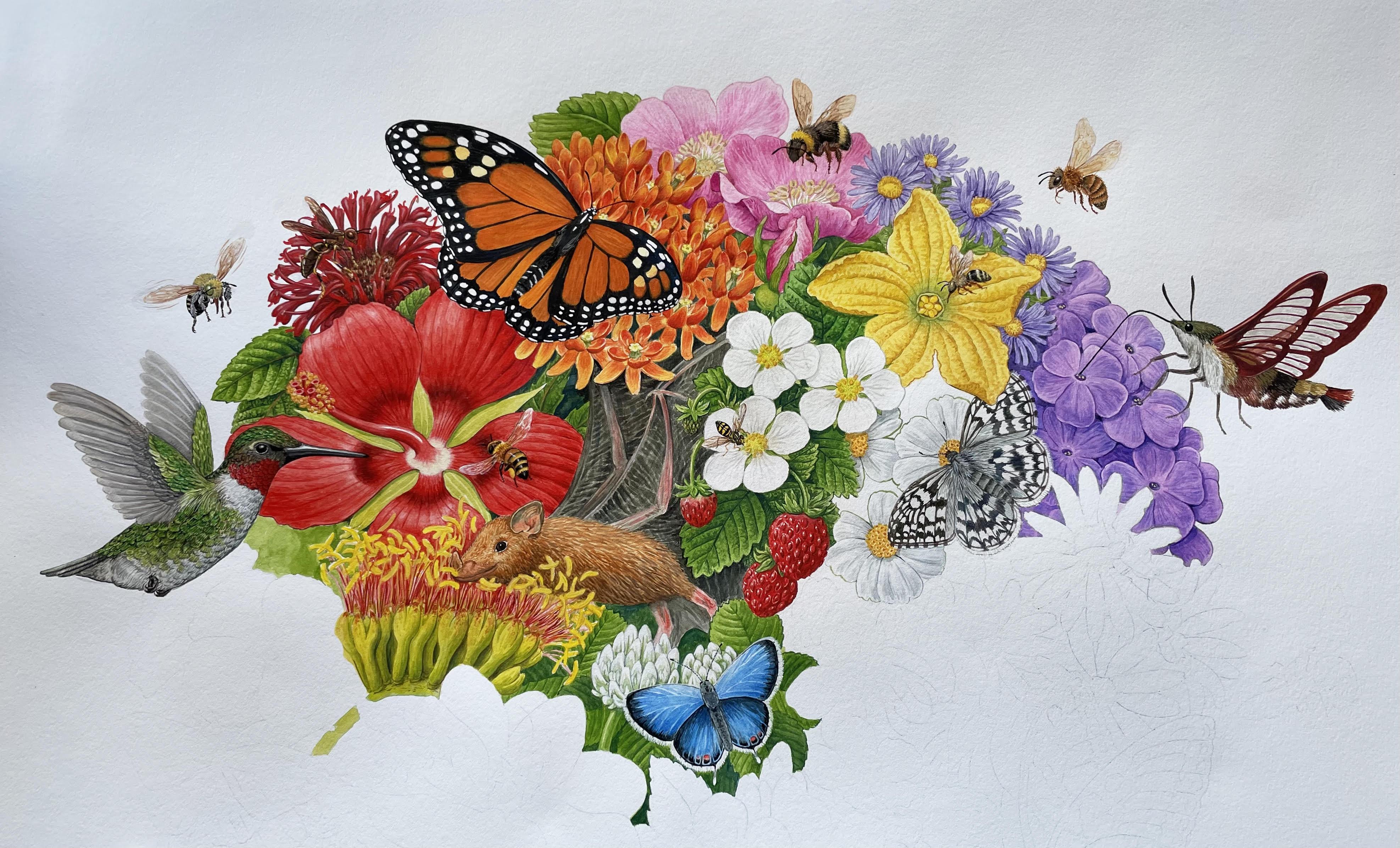
POSTER PROCESS
"I wanted to show the beauty and diversity of pollinators and plants for the 2023 Pollinator Partnership poster and link it with the shape of Earth and how we have a responsibility to preserve these wondrous species. I wanted to represent a wide variety of species so it required a lot of research to get to the final grouping.
My first step was making rough sketches, about six, until I was satisfied. For the hands, I took reference photos of many of my college student’s hands for the drawing. Then I started to refine each species until I had a final sketch which I transferred to my watercolor paper. The work is painted in gouache and at the poster size so it required a very large piece of watercolor paper. I had to paint from each side while standing up bent over the paper to reach all the areas. After I finished the painting, I needed to scan the artwork. This was done in 6 pieces and tiled together in Photoshop. I didn’t paint the dark background. That was added in Photoshop. Then I added the type and it was ready for printing." - Carol Schwartz
Learn more about Carol at csillustration.com
Climate Change and Pollinators
Climate change refers to long-term shifts in temperatures and weather patterns, largely caused by human activities, in particular the burning of fossil fuels. The negative effects of climate change are a threat to the health of pollinators, people, and the planet.
POLLINTATORS ARE IN TROUBLE
You may never have thought about pollinators - the bees, butterflies, birds, bats and more, that are critical to food and ecosystems - and their relationship to climate change, but there is a strong connection. Climate change is thought to be a key cause of pollinator decline across the globe.
Pollinators are dying because their food and homes are disappearing, diseases have increased, and rising temperatures and extreme weather events are affecting their ability to survive - all of which are related to climate change.
POLLINATORS ARE GOOD FOR THE PLANET
Pollinators and their habitats provide a number of important ecosystem services which promote planetary health and fight climate change. The conservation of pollinators supports healthy ecosystems, air, soil, water, and plants. Combined, these results make planet earth a safer place for us to live. Read more below about all the different pollinator groups represented in this year's poster and their connection to mitigating climate change.
Butterflies and Moths
Photo by Amber Barnes
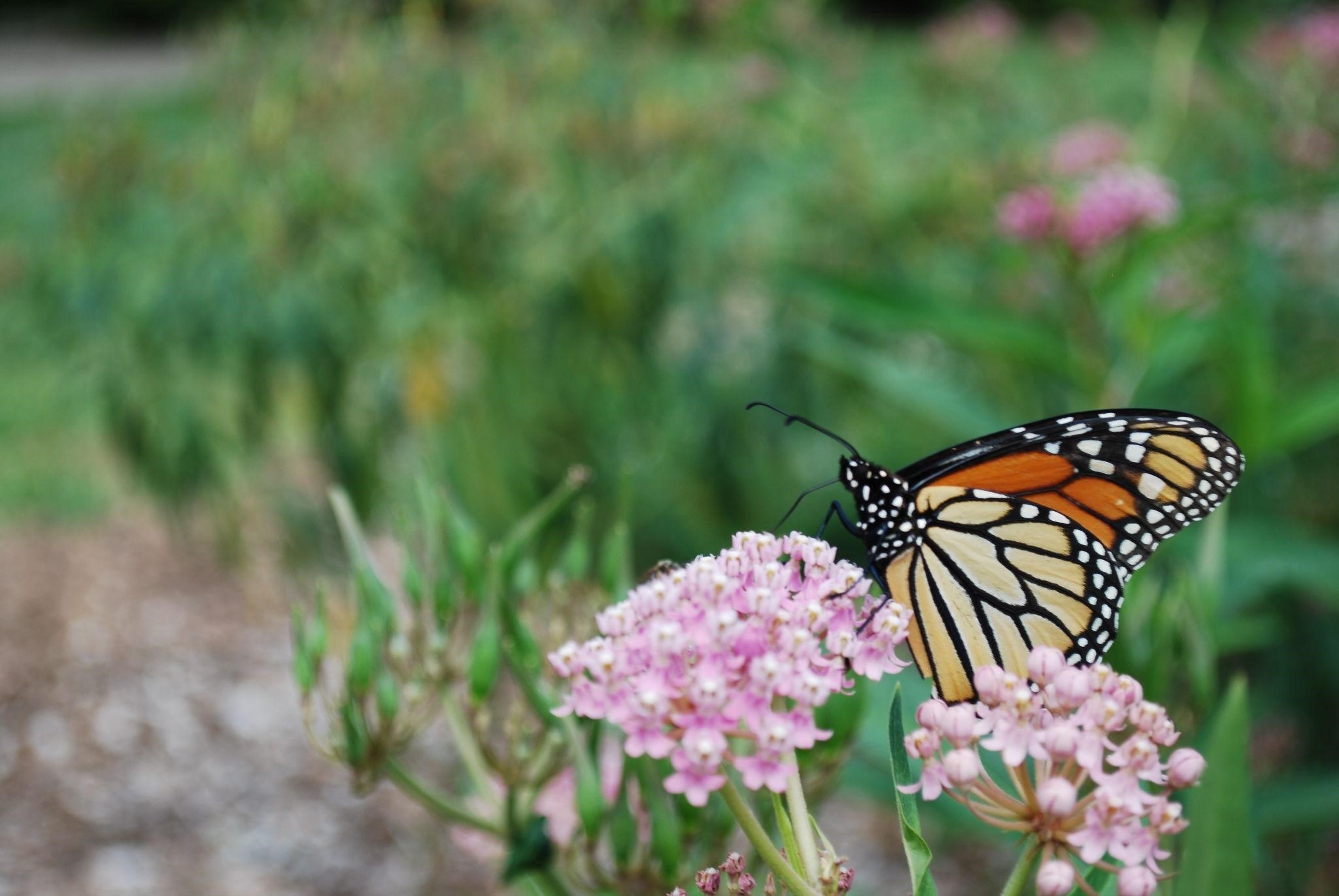
Butterflies and moths (Lepidoptera) are important pollinators in their own right, despite the fact that they are less efficient pollinators than bees. With few exceptions including the famous relationship between the Yucca plant and the Yucca moth, there is widespread evidence that adult Lepidoptera are mostly inadvertent pollinators, and “accidentally” pollinate flowers as they feed on nectar. This being said, moths and butterflies provide critical pollination services for both wildflowers and agricultural crops, and many flowering plants have evolved to induce visitation from adult Lepidoptera. For example, flowers that open during the day, have longer corollas, and have large landing areas are more likely to attract butterflies whereas flowers that open at night and are whiter in coloration are more likely to attract moths.
Along with habitat loss and overuse of pesticides, climate change has the potential to negatively impact adult Lepidoptera that are more specialized in which species they feed and rely on for reproduction. The increasingly rare Karner blue butterfly (Lycaeides melissa samuelis) is one of these species, as its larvae have evolved to follow the temperature shift between winter and spring as an indication of when they should hatch. As spring arrives earlier in the year due to temperature shifts, this impacts the blooming periods for a number of host plants and in the case of the Karner blue, increasingly warmer temperatures are causing its host plant the wild blue lupine (Lupinus perennis) to emerge sooner in the year, leading to a decline in the larval success rate of the Karner blue. This case study presents us with a serious warning sign, indicating that pollinators that rely on one or two plants for reproduction are increasingly put at risk by warming and increasingly unreliable climate patterns.
U.S. Fish & Wildlife Service: Karner Blue Butterfly
Maryland Agronomy News: Moths, Butterflies, and Pollination
Hummingbirds
Photo courtesy of USFWS
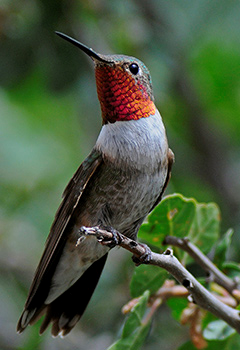
Hummingbirds are highly adapted pollinators that use their long bill to feed on nectar found in brightly colored flowers. The ruby throated hummingbird (Archilochus colubris) resides mostly in the eastern United States, feeds on primarily orange and red tubular flowers like bee balm, honeysuckle, trumpet creepers and red morning glories. These tiny birds will hover between different flowers allowing them the opportunity to pollinate multiple wild flowers. Many species of hummingbirds migrate to Mexico and Central America for their non breeding season. Hummingbird numbers are decreasing as they are sensitive to the effects of habitat loss and climate change. Climate change may contribute to a change of migration patterns as hummingbirds have to quickly adapt to changing food requirements and breeding locations. Many species of hummingbirds live at sea level so as the sea rises due to warming temperatures, many species will have to migrate faster and find suitable habitats to rest along the way. Some species are less able to adapt to the habitat loss as they need specialized habitats, increasing their chances of extinction.
Warming temperatures around the world could also contribute to shifts in native versus invasive plants that may affect food source availability for multiple hummingbird species. While hummingbirds have been known to eat insects and tree sap, their primary source of food is nectar. Having various options of nectar available along their migratory routes is vital to their survival, and as climate change contributes to changing historic habitats, it’s an important time to remember how little things matter.
National Park Service: Tiny and mighty hummingbirds.
All About Birds: Ruby-Throated Hummingbird
Pollinator Partnership: Hummingbird Learning Center
Bats
Photo courtesy of NPS
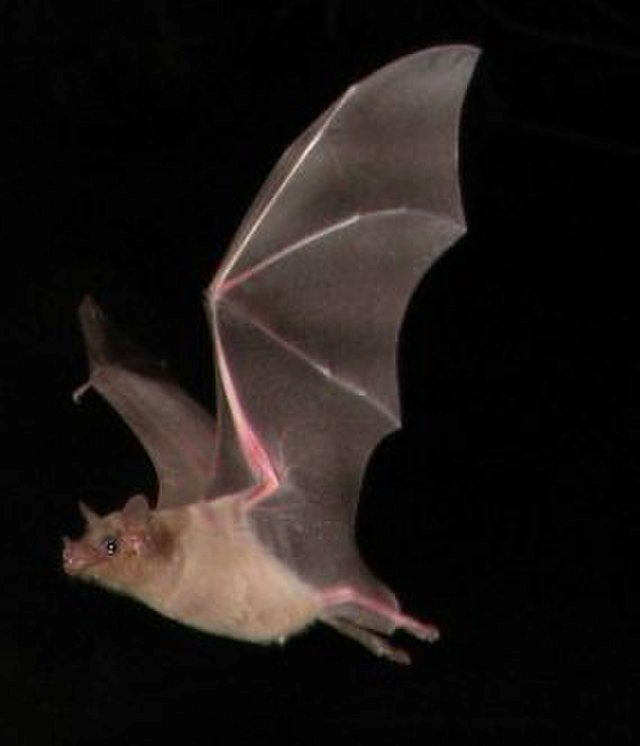
Bats belong to the less common mammal pollinator group, but are crucial to the pollination of cacti, mango, banana, durian, guava, and agave. For example, the lesser long-nosed bat (Leptonycteris curasoae yerbabuena) is the sole pollinator of agave that is used to make tequila. This coevolution between bats and their nectar plants has resulted in an obligatory dependence on one another. However, this partnership is threatened by a changing climate. Warming temperature trends associated with climate change are having observable effects on bat populations around the world.
Bats require specific temperature ranges for their roosting habitat and are not well adapted to even slightly higher temperatures in their roosts. Higher temperatures are also associated with increased aridity in a changing climate. This is a greater concern to bat populations located in already arid regions. These bats must drink every night to stay hydrated, especially nursing females in the summer season. Increased aridity implies a stress on the reproductive ability of bats, leading to bat population declines. Research has also suggested the effects of climate change will impact the range and distribution of cave-roosting bats as temperatures rise and cave-vegetation composition shift. Shifting ranges to new unoccupied areas can also lead to local extinction of currently occupied areas. This is especially true amongst bat populations in high altitude habitats with smaller ranges that don’t have suitable spill-over habitat. Reduction of bat-pollination as a result of climate change has negative implications for other pollinators such as bees, moths, reptiles, and birds that also rely on the plants for nectar. Their keystone nature suggests that climate change will have a compounding effect on the entire ecosystem and global biodiversity.
National Park Service: Bats and Climate Change
Bat Conservation International: Bats Feel the Effects of Climate Change
Bumble Bees
Photo courtesy of Tiffani Harrison
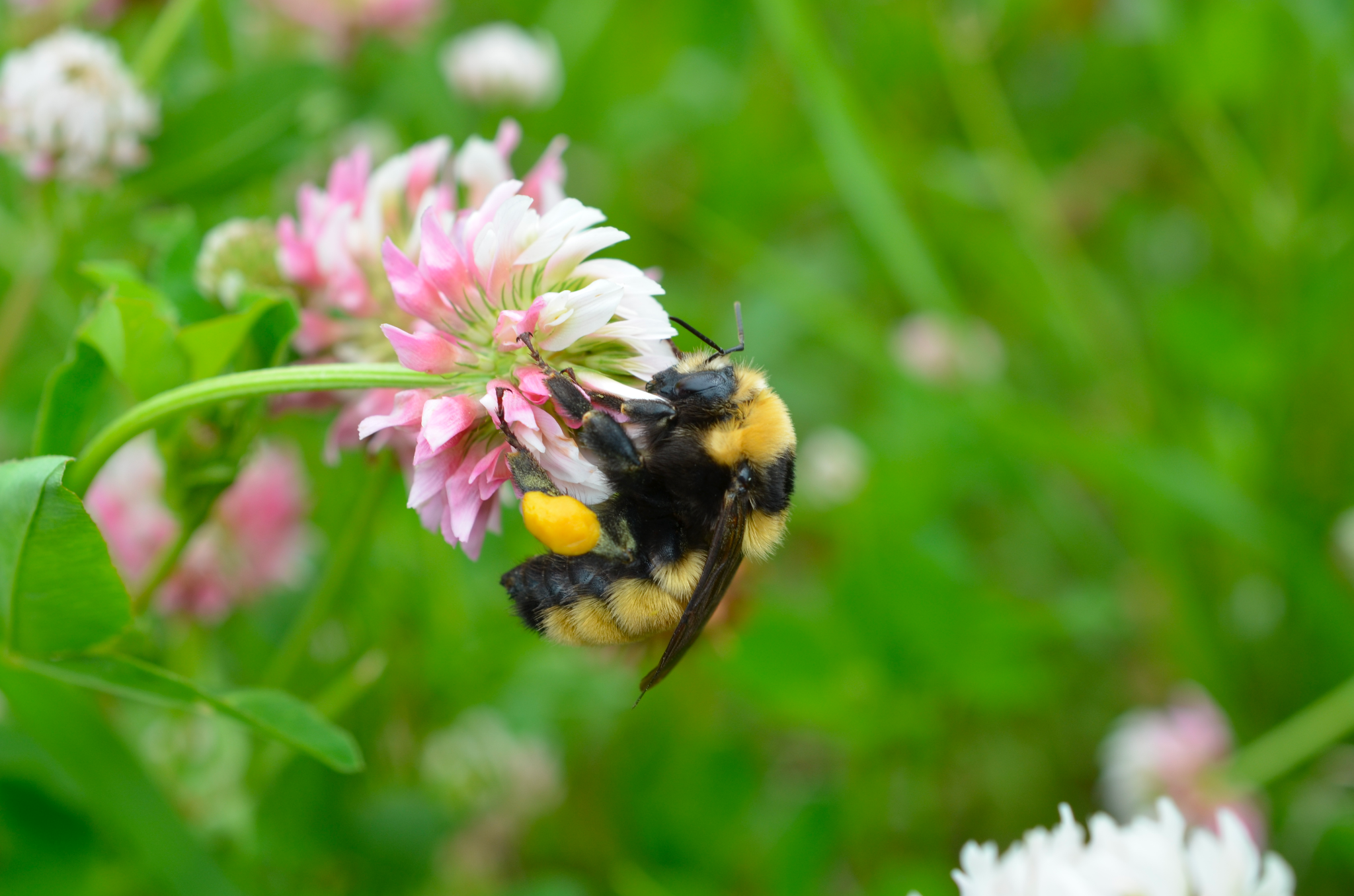
North America is home to several bumble bee species including the common Eastern bumble bee (Bombus impatiens), the California bumble bee (Bombus californicus), Western bumble bee (Bombus occidentalis), and the southern plains bumble bee (Bombus fraternus) that are featured on this year’s poster. Bumble bees are fuzzy insects that are essential pollinators in cooler parts of the world. They are common in areas with four distinct seasons and occupy regions as north as the Arctic and as far south as South America. Their fuzzy bodies enable them to be cold-adapted, making them less common in hot, tropical climates. Conversely, these adaptations make it more difficult for bumble bees to cool off in warm temperatures. Bumble bees and flowering plants have coevolved over time. While gathering pollen and nectar from flowers, bumble bees pollinate the plants they visit by transferring pollen from plant to plant. Pollination services of bumble bees are critical to sustaining natural ecosystems and many agricultural crops.
Climate change negatively impacts bumble bees and the flowers they pollinate. Climate change effects include warmer temperatures, less snow cover, more frequent droughts, and less predictable frost and flowering times. Research suggests that the mismatching of flowering time and bumble bee visitation, leading to decreased pollination and starving bumble bees. Another recent study found that bumble bees in the southern part of their range are going missing, suggesting that southern populations are getting squeezed out of suitable habitats as climate change proceeds. However, bumble bee populations are not shifting their range north, but rather shifting towards higher altitudes in mountainous regions. Migration towards mountain areas may result in increased resource competition with existing bumble bee populations. Overall, bumble bees are at risk for extinction as a result of climate change effects and populations in warmer regions are the most susceptible to extinction.
Nature.com: Climate change-driven range losses among bumblebee species are poised to accelerate
Pollinator Partnership: Climate Change and Bumble Bees
Sweat Bees
Photo courtesy of Peter Pearsall, USFWS
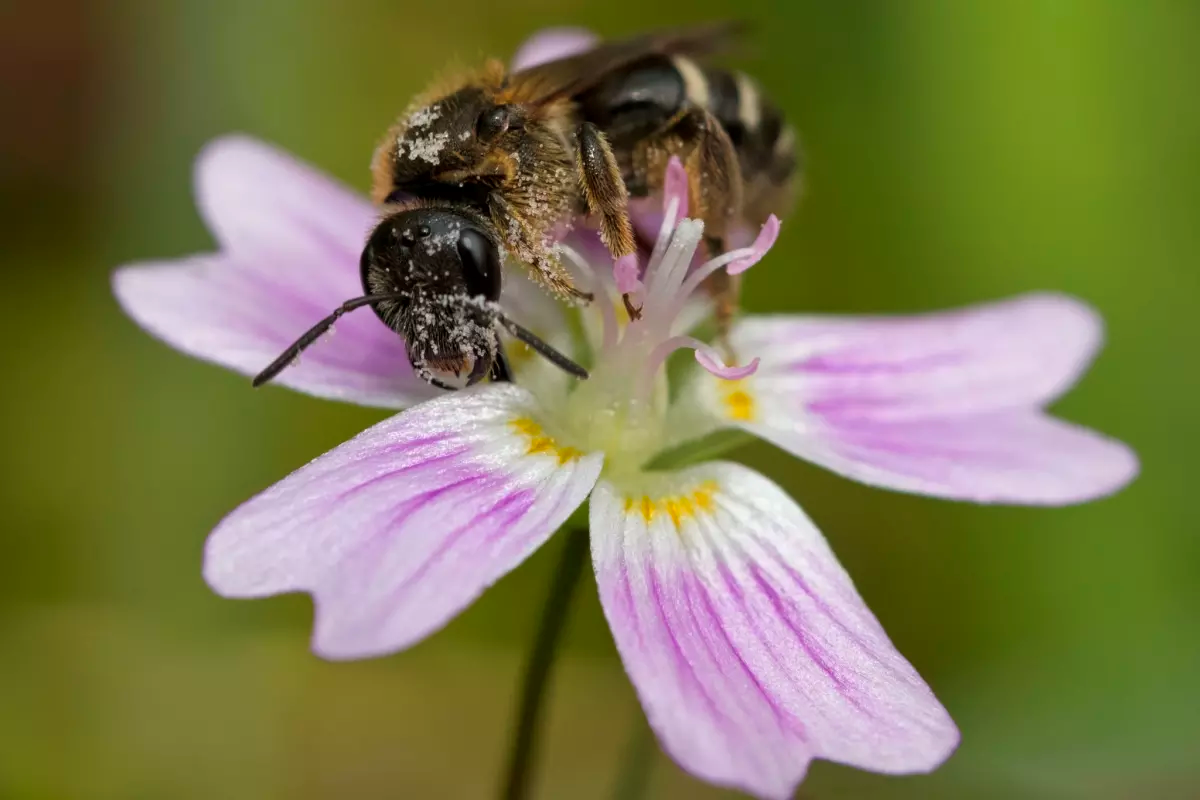
Sweat bees, or halictid bees, are a diverse group of small bees that are found on every continent except Antarctica. Some species are metallic and some species are non metallic. Sweat bees nest in the ground or in rotting tree trunks. This group of bees are generalists and pollinate many different crops such as sunflowers, stone fruits, apples, and alfalfa. Sweat bees are socially polymorphic, meaning they can be found as either solitary or social depending on the environmental conditions. This poses a unique consequence in the face of climate change. A study conducted in Great Britain found that the pressure of climate change effects influenced the likelihood of entering a social caste. Eusociality is less common in the hymenoptera family; however, climate change could change that. Eusociality is more likely to occur when the growing season is longer. Shifting towards eusociality requires social stratification and task partitioning amongst the colony. This means that within the colony, there will be more worker bees and thus, increasing the amount and diversity of pollination. Sweat bees are an important example of how climate change induces complex system changes that affect groups of organisms in different ways. It should be noted that while climate change effects do not cause a direct reduction in sweat bee abundance, it can affect their population in indirect ways such as decreased available forage and subsequent increased competition for resources. Furthermore, climate-induced shifts in sociality may impact the evolution of the species, leading to increased physiological differentiation within the social caste.
Maryland Department of Natural Resources: Native Animal Profile: Sweat Bees (aka Halictid Bees).
Honey Bees
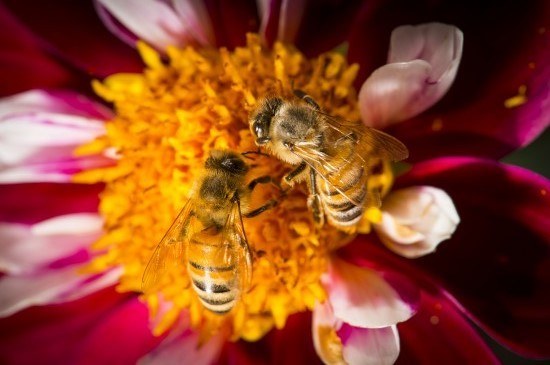
The European Honey bee, Apis mellifera, is an introduced species to North America from Europe. Since its introduction, it has become the most economically important pollinator of agricultural crops worldwide. This bee species is highly adaptable and survives in diverse climates. However, climate change has caused higher temperatures, habitat shifts, increased disease prevalence, extreme drought, and precipitation events. This can be especially detrimental to honey bees that are closely associated with their environment. Altered climate regimes impact key foraging areas and may lead to the decline of certain plant species essential to honey bee survival. Even though honey bees are generalist feeders and therefore have diverse opportunities for nectar sources, this could increase competition with native bees leading to population declines. According to several studies, climate change is expected to cause desert encroachment paired with increased aridity. This is predicted to lead to the disappearance of desert honey bee populations due to decreased available forage and water sources.
Climate change will lead to a reduction in available habitat for honey bees due to shifting flowering periods and loss of native forage. This is exacerbated by extreme weather patterns such as wildfire, extreme drought, heat waves, and heavy precipitation events. Extreme weather events are linked to altered honey bee behavior, leading to limited hours where bees can fly for forage. Decreased foraging time paired with less available forage adds significant nutritional stress on honey bees, making them more prone to predation, pests, and pathogens. On the colony-level, climate change is also expected to increase the prevalence of disease among honey bees. For example, the varroa mite, Varroa destructor, is a parasitic pest that causes colony loss worldwide and is one of the leading causes of honey bee mortality. Varroa are vectors for disease bacteria, further decreasing honey bee immunity. Honey bee colony loss at the landscape level would heavily impact pollinator-dependent agricultural crops, hindering global food production and other ecosystem services that we depend on.
UC Davis: Climate Change Is Ratcheting Up the Pressure on Bees.
USDA: Bolstering Bees in a Changing Climate
Other kinds of bees
Blue Mason bee (Osmia caerulescens) photo courtesy of Line Sabroe
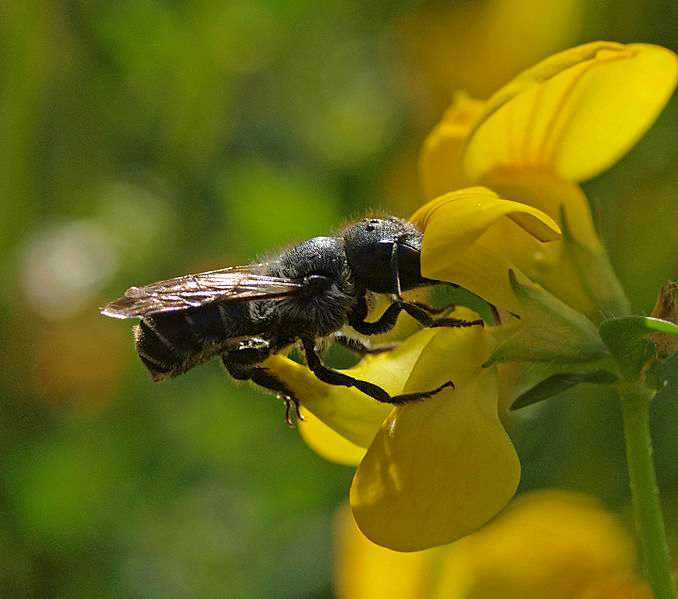
It is important to distinguish the ecological and economic differences between honey bees and native bees in order to understand the impacts of climate change on these bee communities. Native bees are composed of more than 20,000 different species and contribute to more than 235 billion dollars worth of global food production. North America is home to 3,600 native bee species, including the mason bee (Osmia spp.) and the California carpenter bee (Xylocopa californicus) featured on this year’s poster. Interestingly, the most critical factor affecting native bee populations is weather: precipitation and temperature. Climate change induced higher temperatures and heavier rainfall is associated with lower native bee abundance. For example, the California carpenter bee is a solitary species, meaning they do not form nests or hives. Solitary bees are at a much greater risk for extinction under climate change conditions because they do not have other bees or an exterior structure to rely on for thermoregulation. In this case, California carpenter bees must face the pressures of a warming climate and habitat loss by themselves. Weather factors directly impact the growing season by limiting flight time for foraging due to heavy rain and reducing forage availability due to hot summer weather. This can impact the ability to forage provisions for the next generation of bees, resulting in population declines. Research also shows that changing weather patterns cause an earlier spring onset, resulting in higher pre-emergence weight and higher mortality rates post emergence.
Research has shown that weather and climate will impact native bees' range and distribution. Similar to bumble bees and honey bees, the range of native bees will be reduced according to past trends and future climate change predictions. Poleward shifts in addition to migrating to higher elevation areas could be detrimental to native bee populations if the newly occupied habitat is not suitable for forage and reproduction. It’s important to account for habitat loss as a coinciding risk factor alongside climate change as major stressors amongst native bees. Native bees are more likely to be specialist pollinators, meaning they have strong preferences for pollen and nectar from one particular flower genus or species. Risk of extinction is higher for specialist bees compared to generalist bees that have more forage redundancy.
Penn State University: Climate change reduces the abundance and diversity of wild bees, study finds
Beetles
Magnolia and Mordellidae beetles, photo by Beatriz Moisett

Although beetles are not the first pollinators that come to mind, they nevertheless are important pollinators and are some of the first insects to visit flowers. Technically, beetles make up the largest group of pollinators simply because there are so many of them (in fact, their order Coleoptera is the largest in the animal kingdom and beetles account for more than 40% of all insects!). More than 77,000 beetle species are estimated to visit flowers. Fossil records show that beetles were abundant during the Mesozoic era about 200 million years ago, suggesting that beetles were some of the first pollinators and were essential to the reproduction of early gymnosperms like cycads and conifers. This means that some of the earliest flowering plants like magnolia are today still pollinated by beetles. Beetles will feed on the flower and pollen as it visits, so plants have evolved to have tougher petals and leaves in order to withstand the hungry beetles while still benefiting from their presence. This preference is exhibited by beetles’ relationship with magnolia trees. Magnolias have evolved to produce an ideal flower to attract beetles: they’re thicker, bowl-shaped, and emit a fruity, fragrant odor. While more research is needed to further estimate the amount of pollination that beetles provide and to determine which plants most rely on beetles to reproduce, beetles are recorded as preferring day-opening and particularly fragrant flowers. We do know that beetles do not visit flowers to feed on nectar, and so plants that have evolved to accommodate beetles either produce trace amounts of nectar or none at all. Further research is necessary to determine the impacts climate change has on beetles and beetle pollination, although we can surmise that like other specialist pollinators, beetles that rely on one or two specific plants are more at risk than more generalist species. Regardless, the best ways to help beetles are the best ways to help other pollinators: plant a variety of (preferably native) plants that bloom throughout the year, reduce reliance on pesticides, and preserve soil health by using mulch and cover crops to deal with weed control.
Smithsonian Gardens: The Botany of Magnolias
Maryland Agronomy News: Beetles and Pollination
Xerces Society: Notes From The Other Orders: Beetles As Pollinators
U.S. Forest Service: Beetle Pollination
How you can help pollinators and the planet
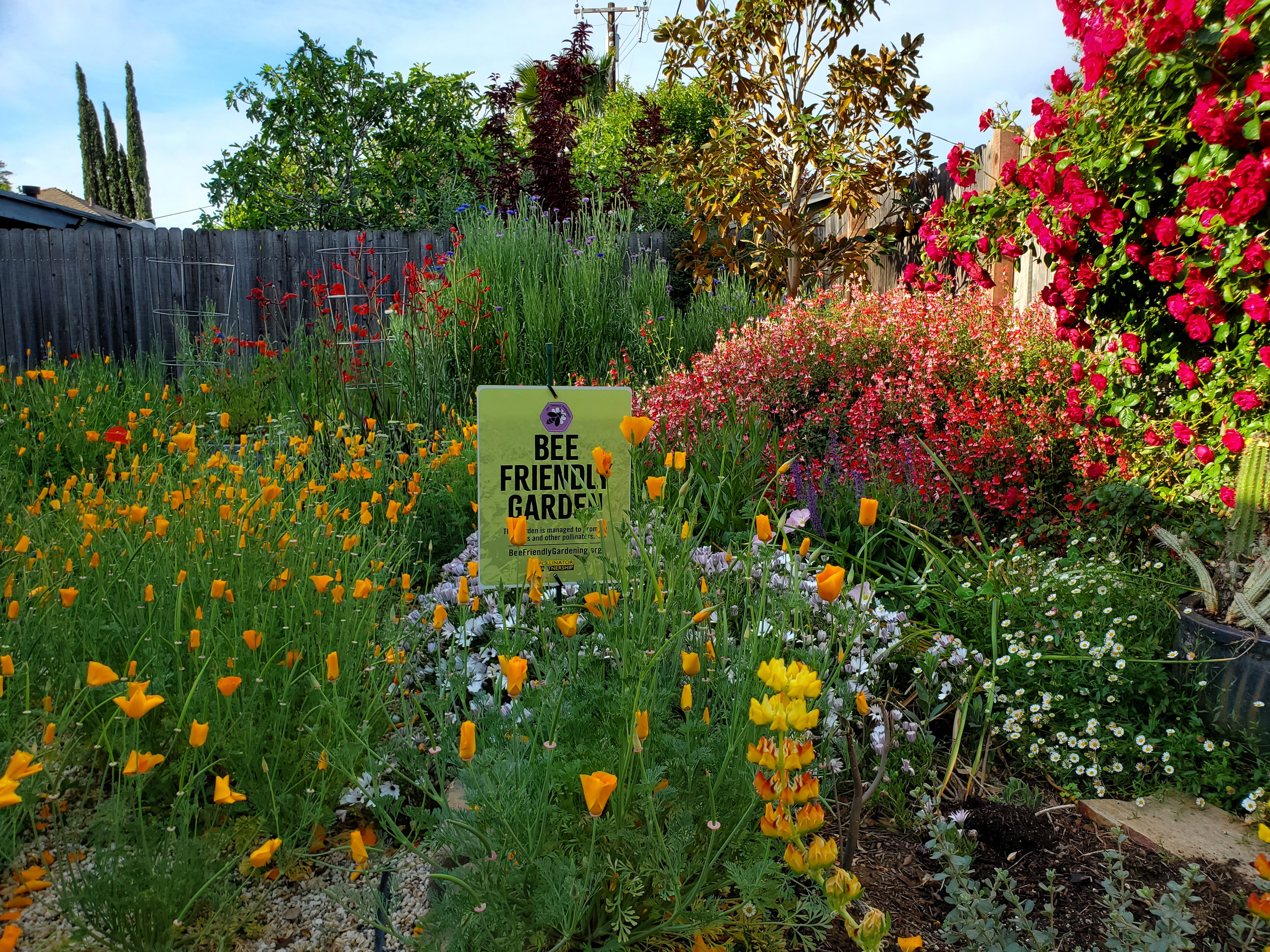
Garden for pollinators - The best thing individuals can do to support pollinators is to simply plant more native and pollinator-friendly plants for them. Whatever space you have, be it a front porch, windowsill, front yard, or balcony - no space is too small to plant for pollinators and provide them with more resources for nutrition and shelter. Gardening also sequesters carbon and can help bolster biodiversity and habitat restoration efforts if the appropriate plants are chosen. By encouraging pollinators and insects to visit your garden, you are also supporting the animals higher on the food chain that rely on these creatures for food. Try to reduce or eliminate use of pesticides, and save water and money by installing rain barrels, using drip irrigation, and watering in the early morning or late afternoon. Also, leave a portion of your yard unkempt or wild - these spaces provide important shelter to ground nesting bees and beetles. Use our Ecoregional Guides to learn which plants to plant and find out more about our efforts to support pollinators through our Bee Friendly Gardening program.

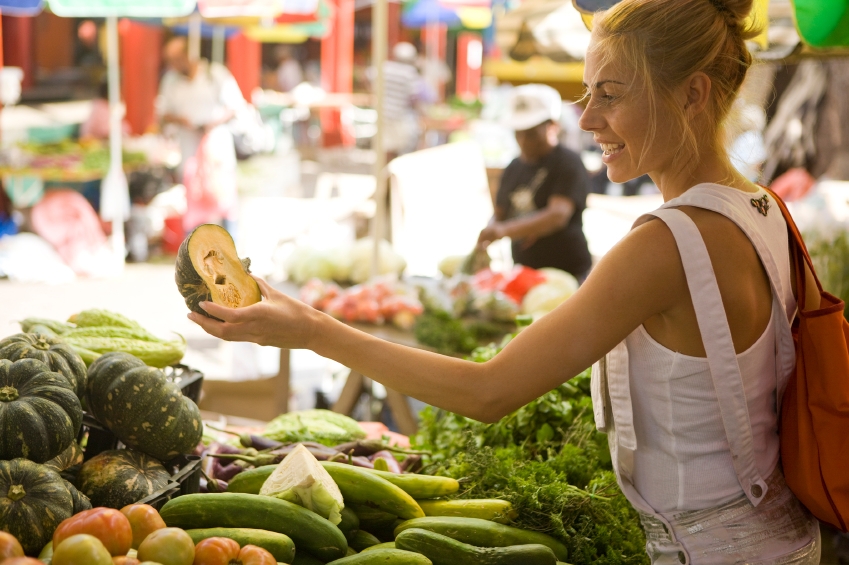
Compost and eat more veggies - Emissions from meat production make up a significant portion of the excess greenhouse gasses in our atmosphere. Eating less meat and integrating more plants into your diet will help cut down on emissions from large scale agricultural livestock production. Composting your food waste is another way to cut down on potent methane emissions and offers another source of fertilizer for your pollinator garden.
Buy/shop local - Try buying more products that are produced locally. You’ll be helping your community and cutting down on emissions and costs incurred from shipping and transportation. Also, it’s beneficial to your community to support your neighbors by buying local. Reducing your reliance on cars is preferable too - try biking or using public transportation to get around.
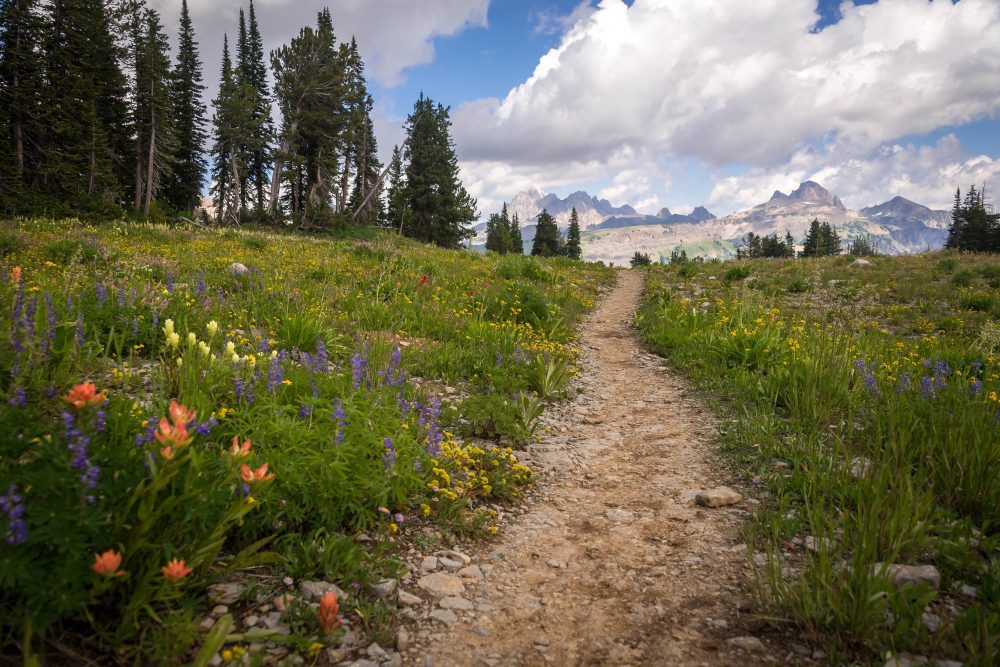
Spend more time outdoors and support local gardens - Simply by spending time outdoors, you’re helping your own mental health and developing a more personal connection to the ecosystems around you. Joining a citizen science project or participating in educational or volunteer events at local parks or gardens will help connect you to nature and others in your community who feel passionately about combating climate change and biodiversity loss. Supporting local parks or gardens by visiting or donating is another way to ensure these spaces can continue existing, providing habitat for animals, green space, and educational opportunities for local schools and afterschool programs. These actions will help cultivate a public consciousness about the importance of biodiversity and the threats climate change poses to future generations of plants and animals.
Vote and get politically active - Vote for and support candidates who understand and support the science behind climate change and biodiversity loss and also stress the importance of climate action on all scales, from local initiatives to federal legislation. Push your representatives at all levels to keep climate change and biodiversity top of mind when making decisions. Although the response to climate change from federal governments has been slow-moving, cities and municipalities across the continent have demonstrated the meaningful climate action can be undertaken at the local level, fueled by pressure from community organizers and local leaders.
David Suzuki Foundation: Top 10 things you can do about climate change
UC Davis: 18 Simple Things You Can Do About Climate Change
The National Wildlife Federation: Gardening for Climate Change
Science Advisors
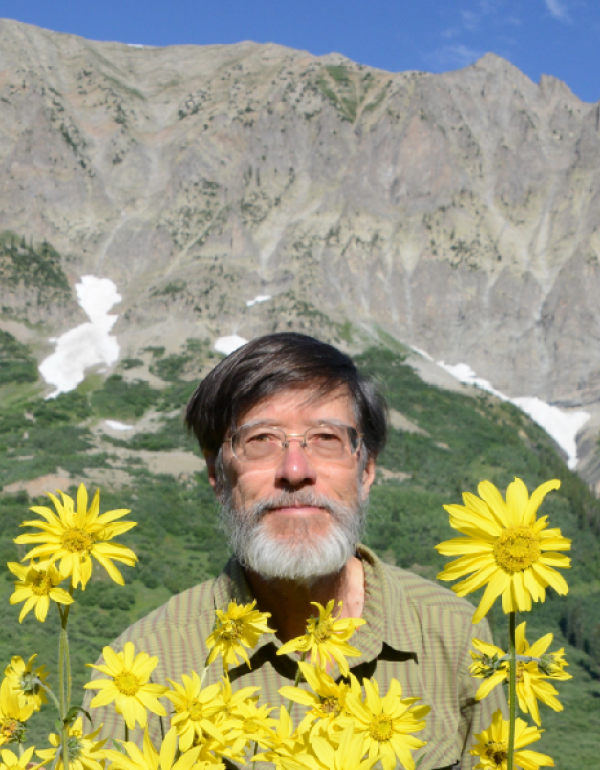
David Inouye has worked on pollinator ecology and conservation for many years, and been an active participant in NAPPC since its inception and currently serves as the Chair of the NAPPC Steering Committee. He continues his work on pollinators each summer at the Rocky Mountain Biological Laboratory.

Dr. Gary Krupnick is the head of the Plant Conservation Unit in the Department of Botany, National Museum of Natural History at the Smithsonian Institution in Washington, D.C. His research examines how data from herbarium specimens can be used in assessing the conservation status of plant species. Gary serves on the Steering Committee of NAPPC.
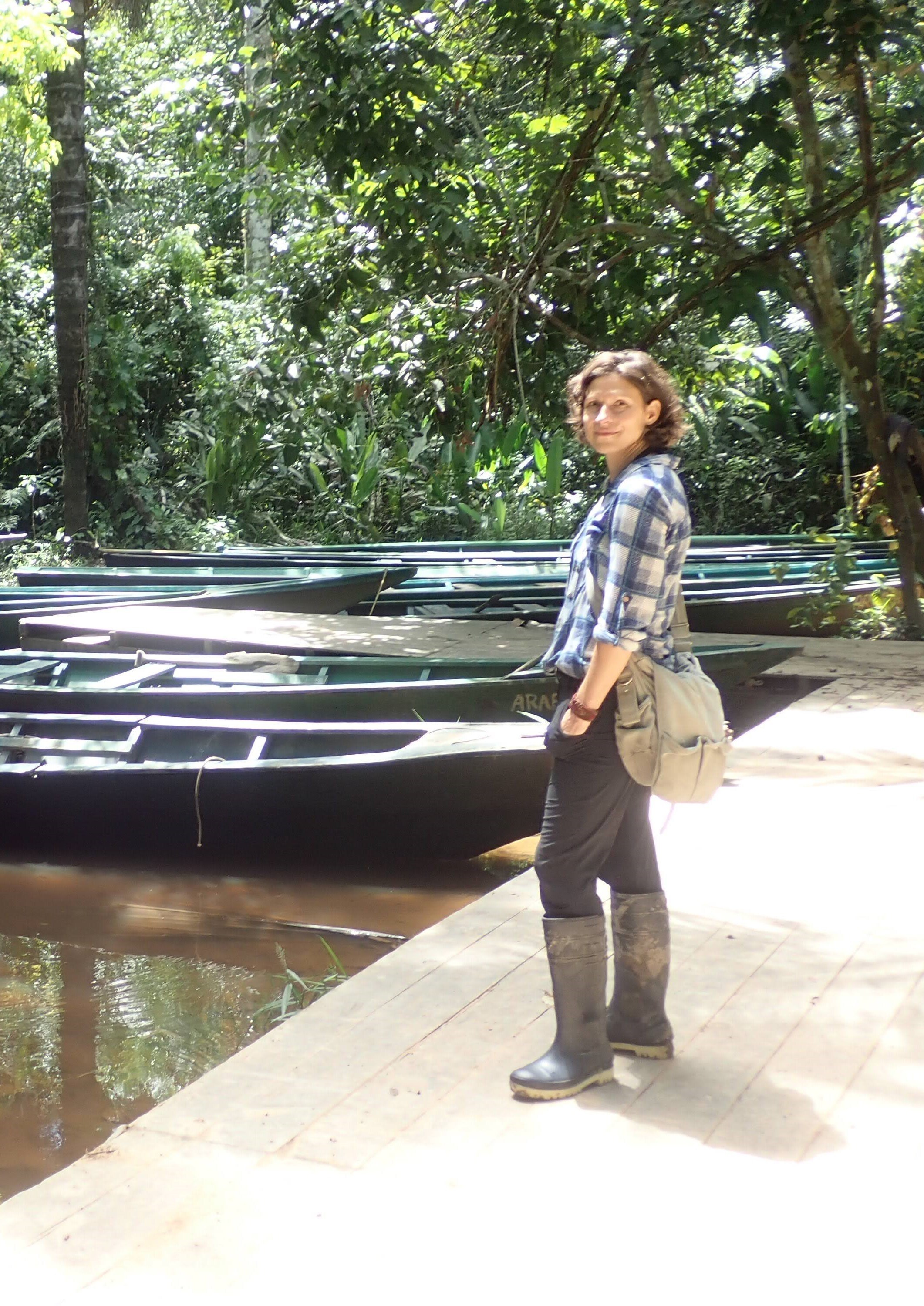
Lora Morandin has been doing research on bees and pollination since 1997. She started out working on bee pollination of greenhouse tomatoes at Western University in Ontario and that grew into an interest in native pollinator conservation and sustainable agriculture. She then did a PhD at Simon Fraser University in British Columbia studying modern agriculture and pollinators, followed by post-doctoral research at the University of California, Berkeley working on enhancement of native pollinators and natural enemy insects through small-scale farm restoration. Lora has co-authored books and book chapters, created outreach and technical guides, and has about 30 peer-reviewed publications on pollinators and sustainable agriculture, including innovative work on economic benefits of ecosystem services. She has consulted for government and industry on diverse ecological topics such as greenhouse coverings, seabird oiling from offshore oil and gas operations, and honey bee health research gaps. One of her main interests is finding ways that human land-use, production, and conservation can co-exist for a healthy and sustainable environment. Lora lives in Victoria, British Columbia and when she’s not working she spends time on her urban farm, with her family and pets, and enjoying BC’s beautiful natural areas.
Orley "Chip" Taylor is the Director of Monarch Watch at the University of Kansas. Trained as an insect ecologist at the University of Connecticut, his research projects have included studies of reproductive isolating mechanisms in sulfur butterflies, reproductive and life history patterns in plants, comparative biology of European and African honey bees and migratory behavior of monarch butterflies. Starting in 1974, he established research sites and directed students studying Neotropical African honey bees (killer bees) in French Guiana, Venezuela, and Mexico. In 1992, Taylor founded Monarch Watch, an outreach program focused on education, research and conservation relative to monarch butterflies. Since then, Monarch Watch has enlisted volunteers to tag monarchs during the fall migration. More than two million monarchs have been tagged by volunteers. Of these, more than 20 thousand tags have been recovered. This program has provided many new insights about the dynamics of the fall monarch migration.
